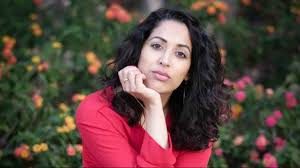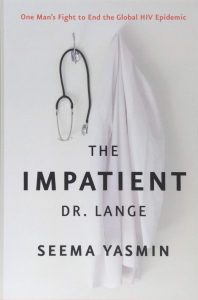The Impatient Dr. Lange: An Excerpt
EXCERPT OF THE IMPATIENT DR. LANGE
Chapter 1: The End
The plane would crash in six hours, and his face would be on the news. American television anchors would mangle his Dutch name, stretching and shortening the “o” and the “e” into swooping ooo’s and snappy a’s as they described him: genius scientist, AIDS fighter, medical diplomat, father of five, humanitarian, mastermind of a potential cure for HIV. Dr. Joseph Marie Albert Lange, better known as Joep—pronounced Yoop— was dead, and the world wondered if the cure for HIV lay singed and scattered across a field in the Ukraine.
The rebels had shot down the wrong plane. Joep, who was known for publicly cursing out fools even when those fools were presidents and Nobel Prize winners, probably muttered “stupid” and “God verdomme” in Dutch from seat 3C in flight MH17’s business class as the plane was pierced by shrapnel. A Buk ground-to-air missile fired by pro-Russian separatists had exploded near its nose.
Damn those idiots fighting a bloody war with Russia. Damn the air traffic controllers for flying his plane into a war zone.
Joep didn’t even like Malaysia Airlines. He had racked up millions of miles on his favorite airline, KLM, as he flew around the world chasing a viral epidemic. But Malaysia Airlines flight MH17 offered the cheap- est business class tickets from Amsterdam to Melbourne, where he was headed to speak at the twentieth International AIDS Conference.
Sixteen thousand people waited for him in Melbourne, waited to hear the Dutch doctor with the soft voice and the words that cut like knives. Joep spoke his mind. He didn’t hide behind jargon or politics. He had put his neck on the line since the very beginning of the epidemic—which coincided with the beginning of his career—by advocating for the poor and the vulnerable, taking positions his peers called fanciful and absurd. On the highest platforms, at the biggest AIDS conferences, Joep disagreed with the world’s top scientists and refused to settle for the status quo—a status quo that favored the white and the wealthy.
He called scientists and policy makers cowards and imbeciles when they said it was too difficult to get lifesaving AIDS drugs to Africans. “If we can get cold Coca-Cola and beer to every remote corner of Africa, surely we can do the same with drugs,” was his mantra.
+++
Joep first met AIDS in the summer of 1981. He was twenty-six years old, fresh out of medical school, and about to come face to face with a new and mysterious killer. The men who walked into the emergency room of his Amsterdam hospital, their bodies feverish, their eyes glassy and rimmed with blue-gray circles, were the same age as he, sometimes younger. Walk- ing corpses collapsed onto gurneys, their bodies rattled with an infection so new to humanity that there was no primer for battling it.
The virus floating through their veins, burrowing into their brains, and making its home in their glands had jumped from monkeys to humans, morphing and mutating along the way. It attacked the immune system, the very part of the body designed to keep intruders at bay. Joep’s patients were left wide open to a slew of bizarre infections that grew inside their lungs and crept beneath their skin. The young men with hollowed- out eyes coughed raspy coughs and sat in pools of diarrhea. They died slow, drawn-out deaths.
There was no dignity in AIDS, only bewilderment. Young lovers were left bereft, parents were dazed. Joep rolled up his sleeves and got to work pressing his palms into bellies, asking his young patients questions about sex and desire. He packed his bags with novels and notepads and flew to San Francisco, London, and Sydney to talk to doctors who said their patients were dying of the same plague and there was nothing they could do to save them.
AIDS was a guaranteed death sentence back then—Joep helped to change that. He ran from the ward to the lab clutching vials of his patients’ blood in his long fingers, the tails of his white coat flapping as he hurried along the corridors of the University of Amsterdam’s Academic Medical Center. This new disease couldn’t be battled at the bedside alone. He needed to be at the lab bench, interrogating the virus that caused AIDS.
Switching between stethoscope and microscope, petri dishes and patients, Joep stripped HIV to its bare bones, revealing the virus’s anatomy and deciphering its Achilles’ heel. While working on his PhD in the mid- 1980s, he made seminal discoveries about HIV and AIDS. Over the next thirty years, he published close to four hundred articles and saved, by some estimates, millions of lives.
When Joep stepped onto the Malaysia Airlines plane on July 17, 2014, he was beside the love of his life, Jacqueline van Tongeren, a woman who had embraced half a dozen careers before she embraced him. Jacqueline was the picture of elegance, shiny brown hair swept her shoulders, cou- ture frocks swished around her calves. High cheekbones and smooth skin belied her sixty-four—soon to be sixty-five—years. Jacqueline’s birthday was just nine days away. Joep would turn sixty in September.
They had met on the AIDS ward of the University of Amsterdam’s Academic Medical Center in 1990, when she was hired as head nurse. Jacqueline was in a relationship back then, and Joep was married to the mother of his five children. Eventually, their decades-long friendship bloomed into a love affair that they announced to knowing friends and family seven years before their deaths.
…There was another secret to share. After years of living apart, the pair had purchased a new home together—a love nest. They would move in when they got back from Melbourne in ten days. Joep planned to write a novel there, Jacqueline hoped to use it as a base while they traveled around the world spending month-long stints in their dream destinations. Of course, they would never stop battling the HIV epidemic. They had seen up close how a virus could creep into bodies and destroy white blood cells, then jump across borders and crush economies.
+++
Now the air above a Ukrainian village was choked with smoke and regret. Guidebooks to the Australian outback turned to cinder, the faces of koala bears crumpled and burned. Travel toothbrushes melted into plastic puddles among stalks of scorched, yellow grass. The wrecked body of the plane lay strewn across the field, jagged pieces of its belly and tail still smoldering.
Every person on board was dead. Two hundred and ninety-eight Australians, Indonesians, Malaysians, Brits, Dutch, Germans, Belgians, Filipinos, with one American, one Canadian, and one New Zealander. Among the dead: three babies, seventy-seven children, a nun, a helicop- ter pilot, five AIDS researchers. An Australian couple who lost their son and daughter-in-law on another Malaysia Airlines plane, flight MH370, when it disappeared in March that year, lost their granddaughter on flight MH17. Bodies rained down over houses and fields. Their limbs and lives became bargaining chips for pro-Russian separatists.
But death was still six hours away. It was a cool summer morning in Amsterdam and Jacqueline was crouching on the floor of her apartment, cramming Missoni skirts and Comme des Garcons blouses into a suitcase already stuffed with shoes. She texted her best friend, Peggy van Leeuwen: “I’m like the Imelda Marcos of Holland!”
Joep was shooting off a sarcastic email to one of his staffers, squeezing medical journals and three novels into a laptop bag to read on the plane, then looping a leash around his diabetic Irish terrier’s neck. He stroked Lizzy’s soft gray fur. They stepped onto Beethovenstraat, the tiny street he lived on with his children, for a stroll before the long flight.
—
 Dr. Seema Yasmin is an Emmy Award-winning journalist, medical doctor, disease detective and author. She was a finalist for the Pulitzer Prize in breaking news reporting in 2017 with her team from The Dallas Morning News for reporting on a mass shooting.
Dr. Seema Yasmin is an Emmy Award-winning journalist, medical doctor, disease detective and author. She was a finalist for the Pulitzer Prize in breaking news reporting in 2017 with her team from The Dallas Morning News for reporting on a mass shooting.
Yasmin was a disease detective in the Epidemic Intelligence Service at the Centers for Disease Control and Prevention where she chased outbreaks in maximum-security prisons, American Indian reservations, border towns and hospitals.
Currently, Dr. Yasmin is a Stanford professor and medical analyst for CNN. Find Yasmin on seemayasmin.com, Twitter @DoctorYasmin and Instagram: @drseemayasmin.
THE IMPATIENT DR. LANGE
 THE IMPATIENT DR. LANGE IS THE STORY OF ONE MAN’S STRUGGLE AGAINST A GLOBAL PANDEMIC.
THE IMPATIENT DR. LANGE IS THE STORY OF ONE MAN’S STRUGGLE AGAINST A GLOBAL PANDEMIC.
The Impatient Dr. Lange is the story of one man’s struggle against a global pandemic―and the tragic attack that may have slowed down the search for a cure. Seema Yasmin charts the course of the HIV epidemic and Dr. Lange’s career as a young doctor who blazed his own path and dedicated his life to HIV. Yasmin draws on written records, medical journals, recorded discussions, expert testimony, and extensive interviews with Lange’s family, friends, and colleagues around the globe―including the people he spoke to in the days before he died. She faithfully reconstructs key scenes from Lange’s life and the history of the AIDS epidemic, revealing how Lange became a global leader in the fight against AIDS.
ORDER NOW!
Buy the book HERE
Category: On Writing






























